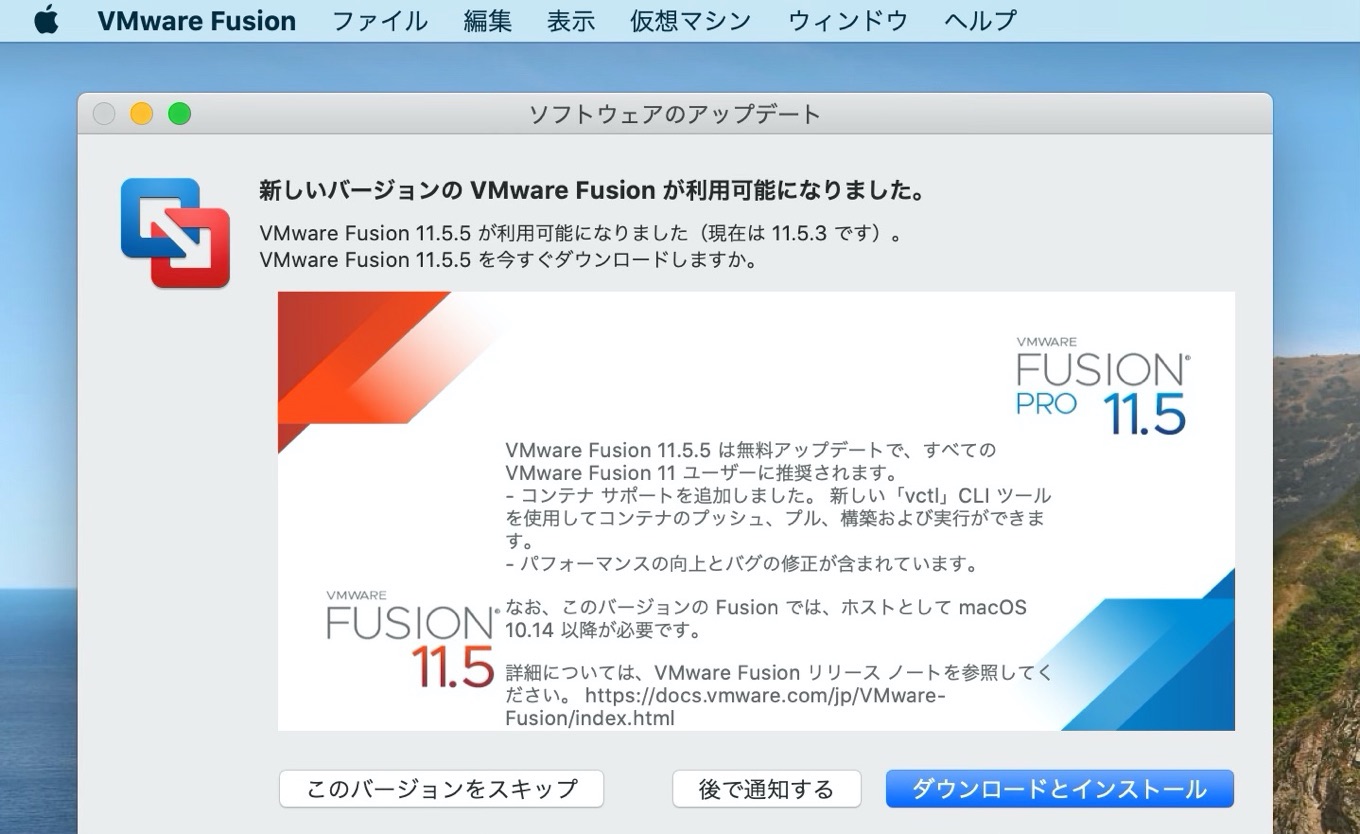

- Vmware fusion 11 usb not recognised install#
- Vmware fusion 11 usb not recognised software#
- Vmware fusion 11 usb not recognised code#
- Vmware fusion 11 usb not recognised windows#
A VSM allows the tagging of specific critical processes and memory used by them as they belong to a separate independent operating system controlled by Hyper-V. Hyper-V provides an abstraction layer between hardware and the operating system. The hypervisor (Hyper-V) loads first, and then the operating system (Windows) loads. The Hyper-V role is required to make these features work (Hyper-V management tools are not needed). Virtualization Based Security (VBS) is a class of technologies that uses virtualization extensions, including VSM, to provide security in Windows.
Vmware fusion 11 usb not recognised code#
HVCI is Hypervisor-protected code integrity. Virtual Secure Mode (VSM) is a feature to leverage processor virtualization extensions that secures data in an isolated region of memory. The main requirements are: UEFI running in native mode and Secure Boot enabled.Ĭredential Guard is a feature to minimize the impact of attacks if malicious code is already running by isolating system and user secrets to make more difficult to compromising.
Vmware fusion 11 usb not recognised windows#
Device Guard is available in Windows 10, Windows Server 2019, and Windows Server 2019. The idea of implementing this feature is to harden the execution of malicious code. That’s why many users don’t like automatic updates.ĭevice Guard is a group of security features in Windows. Windows updates known vulnerabilities but can add issues and destroy a working configuration. These features are Device Guard and Credential Guard. With the updates (Windows 10 v1607 and the appropriate Windows Server versions starting from Windows Server 2016), some new Hyper-V-related features are installed and enabled automatically without Windows user consent. The error occurs when automatic Windows updates are enabled.
Vmware fusion 11 usb not recognised install#
The most interesting situation is when a user doesn’t install Hyper-V and still encounters one of the errors mentioned earlier when using VMware Workstation or VirtualBox. E_FAIL (0x80004005).Ī VirtualBox VM works too slowly and uses the paravirtualisation (emulation) mode. VirtualBox errors:īSOD, such as BSOD with SYSTEM_SERVICE_EXCEPTION VMware Workstation can be run after disabling Device/Credential guard. VMware Workstation and Device/Credential Guard are not compatible. Remove the Hyper-V role from the system before running VMware Workstation. VMware Workstation and Hyper-V are not compatible. This incompatibility is caused by Hyper-V because virtualization extensions are not exposed to type 2 hypervisors installed on a Windows machine where the Hyper-V role is enabled.
Vmware fusion 11 usb not recognised software#
Only one software component can use Intel VT-x or AMD-V at a time. These virtualization extensions are not available for VMware Workstation and VirtualBox when Windows loads. Hyper-V takes control of virtualization extensions when Windows boots. All hypervisors require processor virtualization extensions, which are instruction sets for hardware virtualization – Intel VT-x or AMD-V. A type 1 hypervisor is installed on top of hardware.

A type 2 hypervisor is installed on the operating system that is running on hardware. VMware Workstation, VMware Player, and VirtualBox are type 2 hypervisors, while Hyper-V is a type 1 hypervisor. What causes this problem with Hyper-V? Let’s take a closer look. You can install VMware Workstation and VirtualBox, and run VMware VMs and VirtualBox VMs on the same computer, but not simultaneously. The errors occur even if Hyper-V VMs are not running at that time.

DISCOVER SOLUTION Background and Working PrincipleĪfter you install VMware Workstation, VMware Player, or Oracle VirtualBox on a Windows machine, you might get errors when starting a VM in these virtualization applications.


 0 kommentar(er)
0 kommentar(er)
